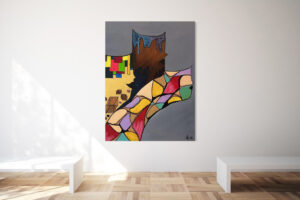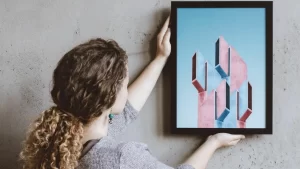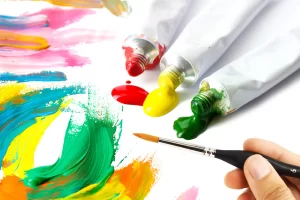Abstract paintings focus on shapes, colors, and forms rather than depicting objects or figures from reality. They break away from traditional representation, encouraging the viewer to interpret the artwork freely and personally. By removing familiar references, abstract paintings invite the viewer to focus on emotions, ideas, or experiences conveyed through the manipulation of color, texture, and form.
In these paintings, the interplay of colors often plays a significant role. Bright hues can evoke energy and excitement, while softer tones may convey calmness or introspection. The relationships between colors—whether they clash or harmonize—become the focal point. For example, a painting dominated by intense reds, blues, and yellows might feel bold and dynamic, while one using softer greens, blues, and earth tones might evoke tranquility.
Texture and form also serve as essential elements in abstract art. Many abstract paintings use thick layers of paint or rough brushstrokes to create a tactile experience. Sometimes the texture itself becomes as important as the colors used. These forms can be geometric—circles, squares, or lines—or entirely freeform, with no apparent structure. A painting with flowing, sweeping strokes might suggest movement, while sharp angles or rigid forms could create a sense of tension or constraint.
Abstract art frequently challenges the viewer’s perspective and emotions. Without a clear subject, the viewer is left to project their feelings and thoughts onto the canvas. This creates a deeply personal experience, as two people might see and feel entirely different things from the same painting. The ambiguity and open-endedness are part of what makes abstract art compelling.
Some abstract paintings have no discernible structure at all, embracing chaos or randomness, while others follow strict patterns and symmetry, revealing an underlying sense of order. The balance between these elements—randomness and control, fluidity and rigidity—is part of what makes abstract art so fascinating.
Abstract paintings are a departure from reality, a visual language that speaks through form and color rather than figures or landscapes. The beauty of abstract art lies in its ability to evoke emotion and thought without being tied to any specific object or narrative, allowing both the artist and viewer to engage in a unique, imaginative experience.




